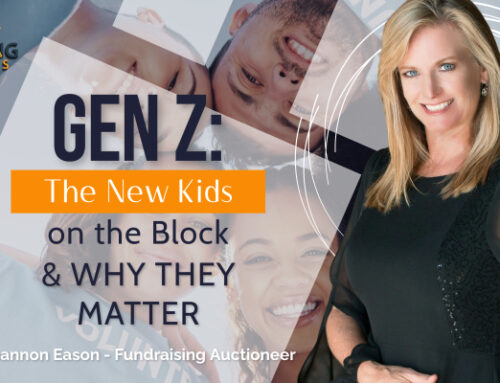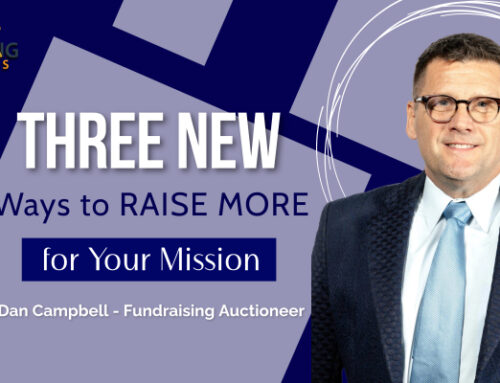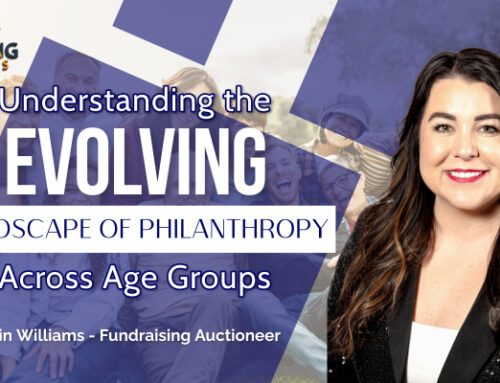By: Scott Jones, Fundraising Auctioneer, CFRE
Whether a seasoned professional or someone new to the nonprofit world, can you clearly identify the difference between sponsorship dollars and monetary donations? Are businesses and donors confused or conflicted when asked to support your event? Are you approaching supporters with the right mindset and are you trying to figure the best way to ask for a sponsorship and/or a donation?
There are typically two major sources of funding your special event–fundraising and sponsorship. Though there are key similarities that we cannot disregard, too often organizational leaders commonly make the mistake of treating the two as the same. In this series of articles, we will explore the fundamental differences between sponsorship and fundraising. So that your non-profit can easily understand proper strategies for securing funding and help your supporters make the right choices.
Regarding this article, fundraising will refer to donations received for the purposes of successfully reaching goals established for a special event. Sponsorship will refer to an advertising value and reputation affinity within the community. In this first article, let us explore the concept of sponsorship.
Sponsorships are based on an equitable exchange of value between both parties and are typically cause-related. When businesses and donors contribute cash or in-kind gifts, they do so usually in exchange for marketing or advertising consideration, access to target markets, a memorial or tribute honoring an individual or entity, or as a means to build a mutually beneficial relationship with a nonprofit or charity.
Sponsorships which usually means supporting special or ongoing events are typically secured by an agreement which clearly outlines the dollar amount of the commitment and the benefits for both the sponsor and the NPO. The organization receives a financial gift or in-kind provision of products or services. And in exchange, the sponsor receives publicity before, during and possibly after the event.
Because sponsorships are highly publicized, this exchange is designed to enhance the sponsor’s reputation and creating a material advantage to the company in terms of raising the company’s public profile and to increase positive awareness of the company or product by associating it with a good cause, therefore, sponsorships are seen as a transactional engagement.
Sponsorships are typically budgeted each year, because over time, companies strive to develop new and continued relationships. These relationships might grow to include employee involvement, advertising programs, networking opportunities for executives and greater brand awareness.
Sponsorships are not usually eligible for charitable tax receipts. This is often why organizations typically offer the sponsoring company a right, privilege, benefit or advantage for their payment to the charity. A common example of a privilege would be complimentary seats to the event (which I will discuss effective best strategies of this practice in one of my upcoming articles.)
Non-profits should be motivated to seek out candidates for sponsorship as it is an opportunity where organizations can aim to provide marketing, promotional or reputation enhancing occasions that will build a positive overview of a sponsor’s brands. Sponsors look to you to help them reach your audience of supporters. Some factors that stimulate a company towards sponsorship are: the mission and purpose of your event, hearing from previous sponsors of positive results and the marketing outcomes attained. Sponsors are very interested in the number of people touched, prospect of new customer acquisition, advertising impressions and broader brand awareness.
In conclusion, a sponsorship is a creative way for companies to invest in their community which allows them to leverage a relationship with nonprofits. It’s not only a great way of supporting an event while providing an excellent opportunity to heighten brand awareness to connected audiences, but also an excellent way to align a company’s core values with the organization’s mission. For sponsors, you want to find those who align with your audiences and see enough value there to provide value of their own.
When prospecting for sponsors, there should always be a shared likeness or alignment of missions. Nonprofits should identify if the exchange of value is equitable for both parties. Either way, just like with donors, you are building relationships where, over time, you create goodwill and trust – no matter what, you are dealing with people. Be certain to follow-up post event with an impact statement to increase the likelihood of future support, equal to or greater for next year’s event. Regardless of how you are working with a sponsor, meaningful and timely communications and reinforcing the value of the relationship is crucial.
If you can understand the principal concepts of sponsorship, and effectively choose which potential partners might be looking for an exchange of value, I believe you are strategically building a strong pipeline of funds that will allow you to fuel your mission with lasting results – while also assisting companies achieve their goals. And finally, sponsorship dollars are not the same as fundraising dollars.
Next month we will look closely at fundraising for special events and how it can be vastly different from sponsorships. Stay tuned…..
If you have any questions or would like to further discuss, I’d love to speak with you.






